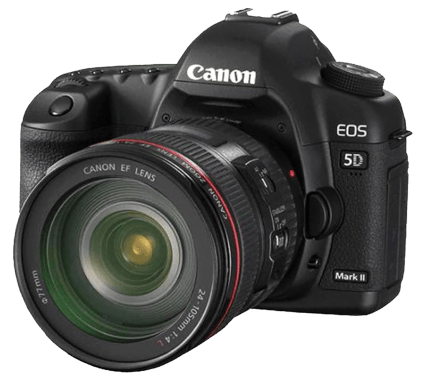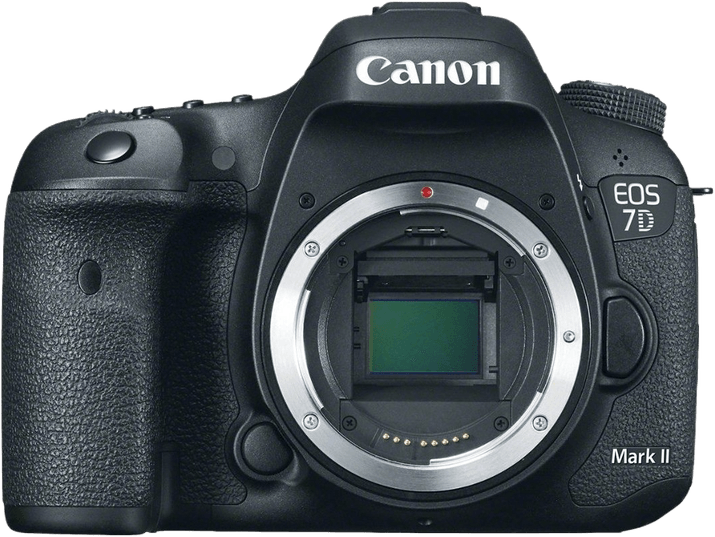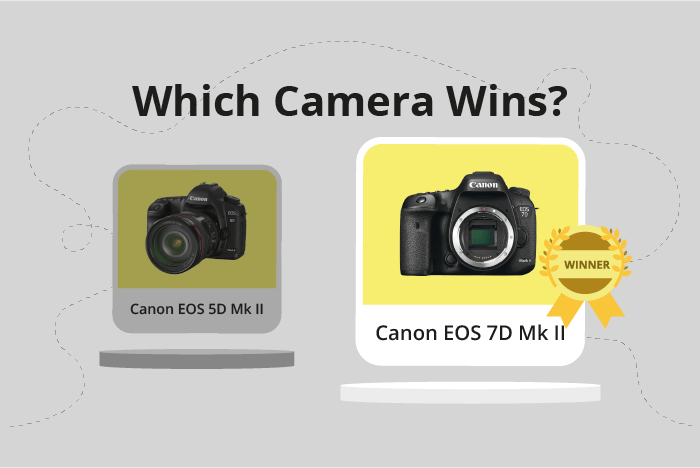Canon EOS 5D Mark II vs EOS 7D Mark II Comparison
Canon EOS 5D Mark II

Canon EOS 7D Mark II

The Canon EOS 7D Mark II emerges as the winner with a score of 60/100, while the Canon EOS 5D Mark II trails behind with a score of 56/100. Both cameras share similarities as DSLR cameras released by Canon. They have comparable sizes, with the 5D Mark II measuring 152 x 114 x 75mm and the 7D Mark II at 149 x 112 x 78mm. In terms of weight, the 5D Mark II is slightly lighter at 850g, whereas the 7D Mark II weighs 910g.
The 7D Mark II’s higher score signifies its superior performance and features compared to the 5D Mark II. Moreover, it was released in 2014, six years after the 5D Mark II’s 2008 release, and boasts a lower launch price of $1800 against the 5D Mark II’s $2199.
Despite its lower score, the 5D Mark II has the advantage of being lighter and more compact, making it more convenient for photographers on the go. However, the 7D Mark II’s improved features and lower price make it the better choice for those seeking an upgrade or entering the DSLR market.
Canon EOS 5D Mark II vs EOS 7D Mark II Overview and Optics
The Canon EOS 7D Mark II outperforms the Canon EOS 5D Mark II in optics, with a score of 61/100 compared to the 5D Mark II’s 59/100. Both cameras share certain specifications, such as 20.2 and 21 megapixels, a CMOS sensor, a Canon EF lens mount, and no image stabilization. However, the 7D Mark II has advantages over the 5D Mark II in other areas.
The 7D Mark II surpasses the 5D Mark II in shooting speed, boasting 10 frames per second compared to the 5D Mark II’s 3.9. This makes the 7D Mark II a superior choice for capturing fast-moving subjects or action photography. Additionally, the 7D Mark II is equipped with a Dual Digic 6 processor, providing faster image processing and improved performance.
In contrast, the 5D Mark II has a full-frame sensor, which allows for better image quality and low-light performance than the 7D Mark II’s APS-C sensor. The full-frame sensor also has a higher DXOMARK score of 79, compared to the 7D Mark II’s score of 70. This indicates that the 5D Mark II has a better overall sensor performance.
While the 7D Mark II excels in shooting speed and processing, the 5D Mark II retains an advantage in sensor quality and low-light performance due to its full-frame sensor. The choice between these two cameras depends on the photographer’s priorities and preferences, whether they require a faster shooting speed or a higher-quality sensor.
Canon EOS 5D Mark II vs EOS 7D Mark II Video Performance
The Canon EOS 7D Mark II emerges as the winner in video capabilities with a score of 56 out of 100, while the Canon EOS 5D Mark II trails behind with a score of 43. Both cameras share common specifications such as Full HD video resolution and maximum video dimensions of 1920 x 1080. Additionally, neither camera has built-in time-lapse functionality.
The EOS 7D Mark II outperforms the EOS 5D Mark II primarily due to its higher maximum video frame rate of 60fps, as opposed to the 5D Mark II’s 30fps. This allows for smoother video playback and better slow-motion capabilities, giving users more creative control in their videography projects.
However, the EOS 5D Mark II does have some advantages over the EOS 7D Mark II, despite its lower score. One such advantage is the larger full-frame sensor, which can potentially result in better low-light performance and a shallower depth of field. This can be beneficial for videographers seeking a more cinematic look in their footage.
To conclude, the Canon EOS 7D Mark II is the superior choice for video capabilities, mainly due to its higher maximum frame rate. Despite this, the Canon EOS 5D Mark II still has its merits, particularly with its full-frame sensor, which can provide better low-light performance and a shallower depth of field. Ultimately, the choice between these two cameras will depend on the specific needs and preferences of the user.
Canon EOS 5D Mark II vs EOS 7D Mark II Features and Benefits
The Canon EOS 7D Mark II wins the features comparison with a score of 57/100, while the Canon EOS 5D Mark II scores 54/100. Both cameras share several specifications, such as a 3-inch screen size, absence of a touchscreen and flip screen, WIFI connectivity, and no Bluetooth.
The 7D Mark II outperforms the 5D Mark II in screen resolution and GPS functionality. With a screen resolution of 1,040,000 dots, the 7D Mark II offers a sharper display than the 5D Mark II’s 920,000 dots. This difference allows for better image preview and menu navigation. Additionally, the 7D Mark II features built-in GPS, which the 5D Mark II lacks. This enables users to geotag their photos, providing location data and enhancing organization.
On the other hand, the 5D Mark II does not surpass the 7D Mark II in any specific feature. Both cameras have identical specifications in all other aspects, making the 5D Mark II equally functional but not superior.
In comparing the Canon EOS 5D Mark II and the Canon EOS 7D Mark II, the 7D Mark II excels in screen resolution and GPS capabilities. While the 5D Mark II remains a reliable option, the 7D Mark II’s advantages make it a better choice for those seeking higher image preview quality and location data for their photos.
Canon EOS 5D Mark II vs EOS 7D Mark II Storage and Battery
The Canon EOS 7D Mark II outperforms the Canon EOS 5D Mark II in storage and battery with a score of 65/100 compared to 37/100. Both cameras share similarities, including the lack of USB charging and compatibility with the LP-E6 battery type.
The 7D Mark II excels with its dual memory card slots, accepting both SD/SDHC/SDXC and Compact Flash cards, increasing storage options. However, it falls short in battery life, offering 670 shots per charge, compared to the 5D Mark II’s 850 shots.
On the other hand, the 5D Mark II has only one memory card slot, accepting Compact Flash (Type I or II), UDMA, and Microdrive cards. Its longer battery life is a notable advantage over the 7D Mark II.
Taking these factors into account, the 7D Mark II provides superior storage capabilities with its dual card slots, while the 5D Mark II offers better battery life.
Canon EOS 5D Mark II vs EOS 7D Mark II – Our Verdict
Are you still undecided about which camera is right for you? Have a look at these popular comparisons that feature the Canon EOS 5D Mark II or the Canon EOS 7D Mark II:

